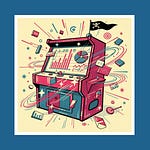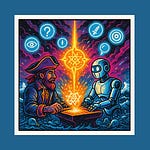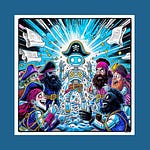This is a 🏴☠️ Founding Members–Only 🏴☠️ post. Founding Members get access to the Pirate Eddie Bot to ask category design questions, weekly actionable insights, the full library with 20+ audiobooks 150+ mini-books, and more. See the Founders Deck here.
Dear Friend, Subscriber, and Category Pirate,
Tesla just cut prices again.
It’s roughly a $1K–$5K drop across the Model 3 and Y lineup.
And the Internet lost its mind.
Wall Street called it desperate. Superconsumers called it genius. Pundits argued over margins vs. volume.
But almost everyone missed the point.
Tesla isn’t slashing prices—they’re sizing the prize.
This is a Category Design strategy.
By lowering the entry point to $37K—the sweet spot where demand elasticity bends sharply upward—Tesla just expanded its total addressable market by roughly 1.6×.
They didn’t “lose $5K.”
They bought a bigger future.
That’s the difference between fighting for margin and designing for magnitude.
Most people fly blind when they talk about market size.
They make decks, raise capital, and price products with spreadsheets that look backward instead of forward.
But TAM (Total Addressable Market) is belief disguised as math. When you can fuse belief + math + Superconsumer insight, you stop guessing and start designing the future.
Learning to size the prize is the bridge between “good business” and “Category King.”
When you do that:
You gain conviction. You’ll never pitch or price from guesswork again. You’ll know exactly how high is high and be able to prove it.
You gain clarity. TAM stops being a static slide and becomes a living compass that guides every decision.
You gain alignment. Investors, employees, and customers start believing the same future you do—because you can show the math behind the mission.
You gain courage. When belief feels inevitable with numbers, you swing for 10× and 100× moves instead of small, safe bets.
AI Agents make it simpler to size the prize.
Human experts carry bias, and consultants benchmark the past. But a Superconsumer AI Agent (trained to think like your most passionate customers) can see the exponential curves others miss. It blends MBA-level analysis with Superconsumer empathy. It helps you quantify emotion, pressure-test assumptions, and model belief into data your board, team, and market can rally around.
That’s what The Trillion-Dollar Future mini-book is about—how to turn TAM from a spreadsheet into a steering wheel, and how to use AI to drive it.
Now, here’s how to do it.
The mini-book showed you what’s possible.
This Founder’s post shows you how to start build it.
You’ll learn how to train your own AI Agent to think like a Category Designer—to run the numbers like an MBA, feel the market like a Superconsumer, and see the exponential like a Pirate.
You can use any LLM to size your prize.
But Pirate Eddie Bot, available exclusively to Founding Members, is different.
It’s trained on every Category Pirates framework, from Superconsumers to Lightning Strikes, so every answer you get is rooted in Category Design thinking, not generic business advice.
The Prompt Pack To Build Your Trillion-Dollar Future
Below are the prompts—five for each step—to turn The Trillion-Dollar Future from a concept into an actionable strategy for your business.
Prompts For Step 5: Finding Your Adjacent Supers
What You’re Doing: Expanding your category by uncovering the 9 adjacent categories your Superconsumers already belong to.
Why It Matters: Supers don’t live in silos—they buy in patterns. Spotting those overlaps reveals where your next 10× demand hides.
Use Pirate Eddie Bot to think like a Super of 9 Agent by asking these questions:









